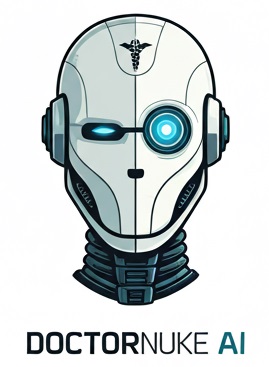AI landscape and models 2025 ,this diagram is a comprehensive 2025 AI model landscape map (originally compiled by Sebastian Raschka). It illustrates how different neural architecture families evolved from transformer-based LLMs into emerging hybrid, recursive, and state-space models (SSMs) — representing the major trends in AI foundation model design from 2021–2025.
1. Decoder-Style Transformers (Top Red Box)
Core lineage: GPT → OLMo → Mistral → LLaMA → DeepSeek → Qwen → Gemma → Kimi → GLM → MiniMax → SmolLM
These represent the mainstream path of modern LLMs based on the decoder-only transformer architecture introduced by GPT in 2018.
Each successive model improves efficiency, reasoning, and multilingual performance.
Key members (chronological order)
- GPT (2018): Origin of the transformer-based LLM era.
- OLMo 2 (2024): Open Language Model project emphasizing transparency and open training data.
- Mistral 3.1 / LLaMA 4 (2025): Highly efficient open-source models optimized for long-context and high reasoning.
- Gemma 3 / SmolLM 3 (2025): Google and Hugging Face’s lightweight models for edge devices.
- DeepSeek V3 / R1 (2025): Advanced reasoning LLM with multi-stage training; emphasizes efficiency and reasoning alignment.
- Qwen 3 (2025): Alibaba’s high-performing multilingual model.
- Kimi K2 (2025): Focused on bilingual and code reasoning.
- GLM 4.6 / MiniMax-M2 (2025): Chinese-origin models optimized for dialogue and domain adaptability.
These remain decoder-style transformers — single-direction, attention-based architectures that dominate commercial and open-source ecosystems.
2. Attention Hybrids (Purple Branch, 2025)
Emerging 2025 trend blending transformers with new attention or memory mechanisms for improved long-context reasoning.
Includes:
- MiniMax-M1
- Qwen3-Next
- Kimi Linear
- DeepSeek V3.2-Exp
These use techniques like:
- Linear attention / rotary attention optimizations
- Dynamic context compression
- Mixture-of-Experts + memory caching
Goal: preserve transformer flexibility while reducing quadratic attention cost and improving interpretability.
State Space Models (Left Pink Branch)
The alternative to attention-based transformers, focusing on sequential processing rather than global attention.
- S4 (2021): Original Structured State Space Sequence model — efficient for very long sequences.
- Mamba (2023): Introduced selective state-space updates, enabling longer memory with transformer-like performance but lower cost.
→ Transformer–SSM Hybrids (2024–2025)
Bridging SSMs and transformers:
- Jamba (2024): Combines Mamba + attention.
- Samba (2024): Lightweight open model using hybrid mechanisms.
- Hunyuan-T1, Nemotron Nano 2, IBM Granite 4.0 (2025): Advanced hybrids integrating memory and recurrent capabilities.
These hybridize attention and state-space updates to handle longer context, streaming data, and structured reasoning.
4. Transformer–RNN Hybrids
Recurrent-like LLMs re-emerge:
- RWKV (2023): Replaces self-attention with time-mixed recurrence — transformer-level quality at lower compute cost.
- RWKV-7 (2025): Adds gating and fine-tuned recurrence to support multimodal reasoning.
Goal: transformer power with RNN efficiency — better for edge AI and real-time systems.
5. Liquid Foundation Models (2024–2025)
- LFM 1 (2024) and LFM MoE (2025)
Use continuous-time dynamics (inspired by liquid neural networks).
These adaptively change structure based on input flow — promising for robotics, embodied agents, and self-organizing AI.
6. World Models (2025)
- Code World Mode (2025):
Integrates symbolic reasoning and world simulation — essential for autonomous agents that simulate possible futures and outcomes.
7. Text Diffusion Models
Extending diffusion architectures (originally for images) into text generation and reasoning:
- DiffuSeq (2022)
- LLaDa (2025)
- Dream 7B (2025)
These generate text through iterative denoising steps rather than direct token prediction — potentially more controllable and less biased.
8. LSTMs and Recursive Models
xLSTM (2024):
Next-gen long short-term memory architecture, merging recurrence with transformer efficiency — suited for small and adaptive models.
Small Recursive Transformers (2025):
A new family featuring:
- Hierarchical reasoning
- Mixture of recursions
- Tiny reasoning submodels
These aim to mimic meta-cognition — reasoning about reasoning — with lightweight, modular recursion layers.
9. General Trends Illustrated
- 2018–2023: Transformer dominance (GPT to Mistral)
- 2024–2025: Diversification — hybrids, state-space, diffusion, recursive reasoning
- Goal: Move beyond static token prediction → structured, efficient, and agentic reasoning
Summary Insight
This map shows how the AI field is transitioning from single-architecture LLMs to a diversified, hybrid ecosystem.
The direction aligns closely with PyDxAI’s design philosophy — modular intelligence built on top of static LLMs but enhanced through memory, reasoning, and dynamic learning, not retraining.
